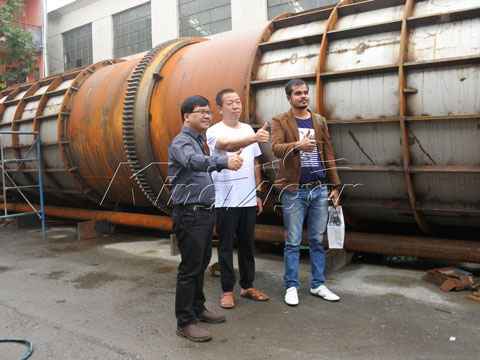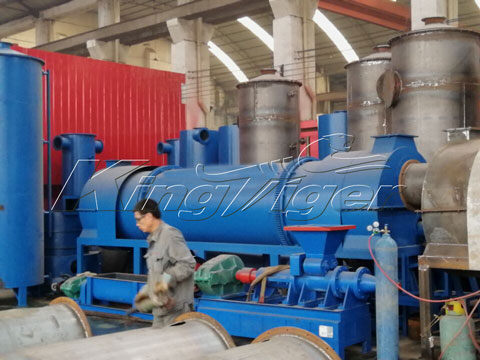A rice husk carbonizer basically takes the hulls, husks or coverings that surround rice grains and turns these into a type of charcoal. These husks on rice need to be cleaned off and are normally discarded. However, the process of turning the hulls into charcoal makes this a environmentally sustainable alternative to providing a heat or energy source.
But how exactly does a rice husk carbonizer (charcoal powder making machine) work to turn these otherwise useless hulls into useful charcoal?

To understand the process, it is necessary to know a little more about carbonization:
What Is Carbonization?
The process of carbonization involves changing organic matter (such as plants and animals) into carbon or char. This process takes place naturally in nature and results in coal, ore and other minerals that are contained deep under the ground. However the process is extremely slow in nature and takes hundreds of thousands of years.
Man has invented a number of different techniques to speed up this process. Distillation is a common way of turning matter into carbon. A rice hull carbonizer uses high temperatures and a few other processes to create the required char from rice hulls.
How Does A Rice Husk Carbonizer Work?
The carbonizer consists of 4 major parts:
- Gasification furnace
- Flue gas purification system
- Carbonization chamber or machine
- Cooling chamber

The rice husks are first placed in the carbonization furnace where they husks are burnt or charred. This process produces flue gas, tar and other byproducts which brings us to the next step in the process.
In the flue gas purification system, the gas produced in the furnace is removed as well as tar and other impurities. It is basically a system that is aimed at filtering the flue gas from the charred raw material in order to provide a more pure end product.
This flue gas does not however go to waste and is in fact an integral part of the next step in the carbonization process.
The flue gas is sent the carbonization machine and used for combustion of the raw material. This combustion process provides the necessary high temperature to turn the rice husks into char. The charring process results in the release of more flue gas which is then used to continuously drive the combustion process.
This closed and continuous cycle of release of flue gas and combustion is circular and created in a closed environment. The closed environment ensures a smoke-free process for turning rice husks into charcoal. This and the fact that the gas emissions are used as part of the carbonizing process, makes it an environmentally friendlier alternative to other types of processes.
The char or charcoal rice husks are then sent to a chamber for cooling. Cooling the charcoal quickly is necessary for a better quality end product.